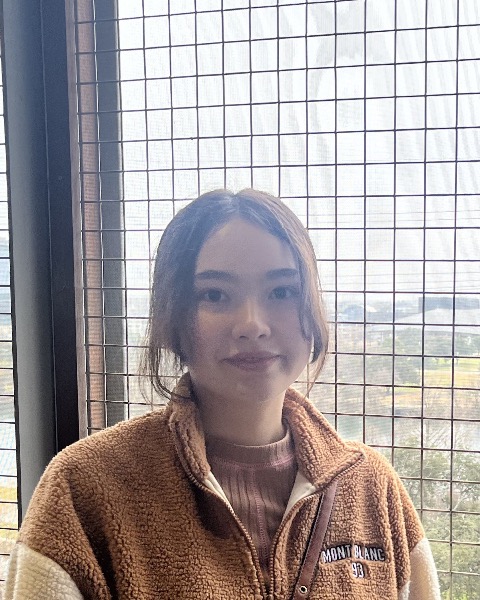Neural Engineering
Neural Engineering - Poster Session E
Y41 - Physical Parameter Effects on Glioblastoma-Endothelial Tube Formation
Saturday, October 11, 2025
10:00 AM - 11:00 AM PDT
Location: Exhibit Hall F, G & H

Amy Poe
Student
UT Austin
Houston, Texas, United States- SS
Stephanie Seidlits
Associate Professor
University of Texas Austin, United States 
Breahna Singer
Graduate Student
University of Texas at Austin
Austin, Texas, United States
Presenting Author(s)
Primary Investigator(s)
Co-Author(s)
Introduction: : Glioblastoma (GBM) is the most common and aggressive primary brain tumor, marked by rapid proliferation, diffuse infiltration, and resistance to conventional therapies. Previous research has shown that the tumor microenvironment, particularly the interaction between GBM and endothelial cells (ECs), plays a significant role in promoting tumor invasiveness. This study focuses on the specific contribution of tumor-associated EC factors in facilitating glioblastoma cell invasion, with an emphasis on the formation of vessel-like structures. While previous research has explored the role of tubule formation in tumor progression, less is known about how the physical parameters, such as pore size and cell seeding density, affect the formation and stability of these endothelial networks.
To address this gap, we investigate how variations in pore size and seeding density influence EC tube formation and its potential to promote GBM migration. Using this model, we assessed structural characteristics of the resulting networks and the dynamic interactions between the two cell types. Our findings suggest that both pore size and cell density significantly affect the integrity and longevity of the tube-like networks, which in turn modulate the invasive behavior of GBM.
These results provide new insights into the physical and cellular parameters that shape the GBM-EC interaction, underscoring the importance of microenvironmental context in GBM progression. By refining our understanding of these mechanisms, this research contributes to the development of more targeted therapeutic strategies that aim to disrupt tumor-supportive structures.
Materials and
Methods: : To investigate the effects of pore size and seeding density on EC tube formation and stability within microporous annealed particle (MAP) scaffolds, three particle sizes (100 µm, 120 µm, and 150 µm) were fabricated to assemble MAP hydrogels. These nanoporous hydrogels (photogels) were seeded with ECs and cured under a UV lamp. Human brain microvascular endothelial cells (HBMVECs) were cultured in endothelial cell growth media (ECMC) and maintained until 80% confluency before passaging. The ECs were seeded at either 2 million cells/mL or 4 million cells/mL. Microparticles were synthesized using a microfluidic emulsion method by using a thiolated hyaluronic acid (HA-SH) and 4-arm polyethylene glycol-vinyl sulfone (PEG-VS) solution. This aqueous solution was loaded into a microfluidic device and was simultaneously pumped with mineral oil to form monodispersed particles. Particles were collected and washed with 3 rounds of hexane and phosphate-buffered saline (PBS) washes to remove excess oil. The control and experimental conditions were then permeabilized with 0.1% Triton and blocked with 5% bovine serum albumin (BSA). Primary mouse antibody staining was used for target proteins, notably including zonula occludens-1 (ZO1), von Willebrand factor (vWF), and phalloidin. Confocal imaging was used for data collection and analysis. Data was collected at 3 time points (day 2, day 6, and day 10). Live/dead staining was used to assess cell viability, and EdU assays were used to assess proliferation. Nonproliferating cells were considered possible candidates for tube formation activities.
Results, Conclusions, and Discussions:: EdU proliferation analysis demonstrated that EC proliferation is affected by a combination of factors like particle size, seeding density, and time. Confocal proliferation data used Alexa Fluor 647 detection to determine the percentage of proliferating and nonproliferating cells. The 2D control conditions were used to adjust gating values before application to experimental conditions. On Day 2, proliferation exhibited a distinct bimodal distribution across all experimental conditions. When normalized to the proliferation percentage of photogel controls, the 4 million cells/mL 150 µm condition demonstrated a significant increase, with a fold change of approximately 2.8. This suggests that larger pore sizes paired with higher cell density initially promote heightened proliferation activity, possibly due to comparatively improved nutrient transport. By day 6, the bimodal distribution is less pronounced, indicating a possible convergence in cellular behavior. Normalized fold changes revealed that 2 million cells/mL particle-based conditions showed significantly enhanced proliferation relative to their photogel controls. In contrast, all 4 million cells/mL conditions showed a reduction in proliferation, with fold changes consistently below 1.0. Day 10 is similar in terms of the bimodal distribution. Normalization reveals that proliferation remained lower overall, except for the 2 million cells/mL for the 100 µm particle size. Only this condition maintained a significantly elevated proliferation with a mean of 2.0 fold change. All other conditions fell below the 1.0-fold threshold. The 4 million cells/mL 150 µm condition had a significant decrease, showing the lowest proliferative activity, compared to the rest of the conditions. This suggests that seeding density and pore size have time-dependent and interacting effects on endothelial cell proliferation in particles and hydrogels. Lower cell densities generally supported more sustained proliferation over time, while larger pores promoted early proliferation. Overall, larger seeding densities have shown evidence to support less proliferative activity over time, which might support claims of higher levels of tube formations in these conditions.
Acknowledgements and/or References (Optional): :
